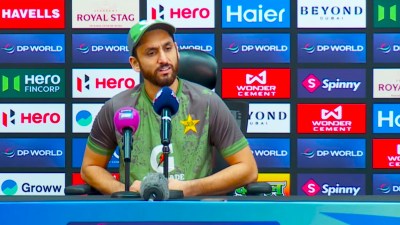Stay updated with the latest - Click here to follow us on Instagram
The Revival Drama
With Maharashtra becoming the hub of the film industry,it was only natural that they would be inspired by the then ruling form of entertainment Natya Sangeet.
Once an inspiration for Hindi cinema,Natya Sangeet finds a younger audience
During the very early days of Indian cinema,filmmakers used to look closer home for inspiration. With Maharashtra becoming the hub of the film industry,it was only natural that they would be inspired by the then ruling form of entertainment Natya Sangeet.
Ironically,cinema soon proved to be the nemesis of this traditional form of musical drama. Yet,it managed to survive,mainly in the interiors of the State,and even thrive when the mill culture ruled Bombay. A more consistent effort to preserve the art form has been made by Nehru Centre,Mumbai. In the last two decades,it has revived and recorded 56 plays,apart from hosting annual festivals. This year,we are hosting the 19th edition of Marathi Natya Sangeet Festival. The event is meant to celebrate the powerful writing and good music that this art form showcases, says LA Kazi,Director of Culture,Nehru Centre. The music in Natya Sangeet plays are often a mix of classical and lighter tunes.
The festival presents Yayati Aani Devyani by Khalwayan,from Ratnagiri,Ek Aloukik Prem Kahani by Nehru Centre,Sangeet Swar Samradini by Bharat Natya Samshodhan Kendre,Pune,and Sangeet Sagar Samrat by Rangmanch,Mumbai. It will conclude with the screening of the Marathi film,Baalgandharva. This biopic focusses on the life of Baal Gandharva,one of the main proponents of this performance art.
Natya Sangeet which is said to be inspired by Yakshagana,a musical theatre form popular in Karnataka made its debut in 1843,when Vishnudas Bhave presented Seeta Swayamvar. The success of this form came in 1880 with Shaakuntal by Balwant Pandurang Kirloskar,that had nearly 200 songs. Following this,the popularity of the form grew and Indian mythology became a major source of its content. It also took up social issues. For example,Sangeet Sharda opposed child marriage and is considered to be a pioneer in social drama in India, says Kazi.
After a roller-coaster journey,Natya Sangeet is once again finding new audiences. Theatre director Nipun Dharmadhikari,who recently revived the 1913 play Sangeet Saunshay Kallol,a comedy of errors,has had more than 20 shows of the play so far. Initially,only older people came for the play. Later,we spotted more number of younger viewers, he says.
Ravindra Khare of Punes Bharat Natya Samshodhan Kendre,which mainly does Natya Sangeet productions,says that like every classical art form,this too is forever. The shows of our Katiyar Kaljat Ghushli have been drawing a good crowd in the State as well as outside, he says. However,modern life has brought about one major change in this art. Earlier,the play used to be five-six hours long and staged throughout the night. Now,even while doing an old play,we reduce the length to less than three hours, he says.







